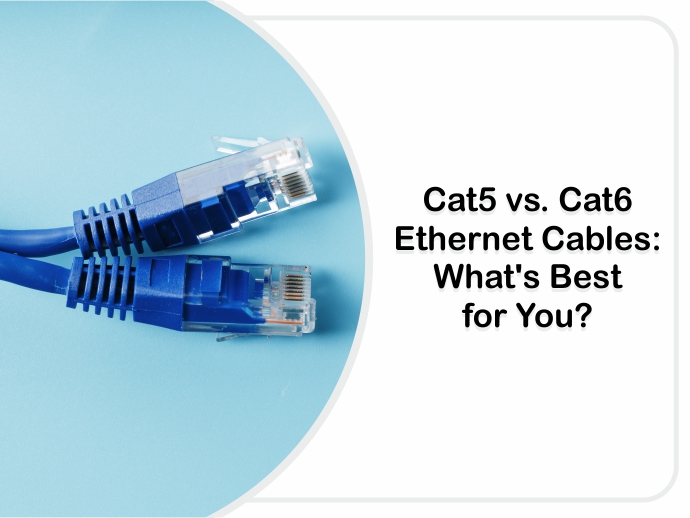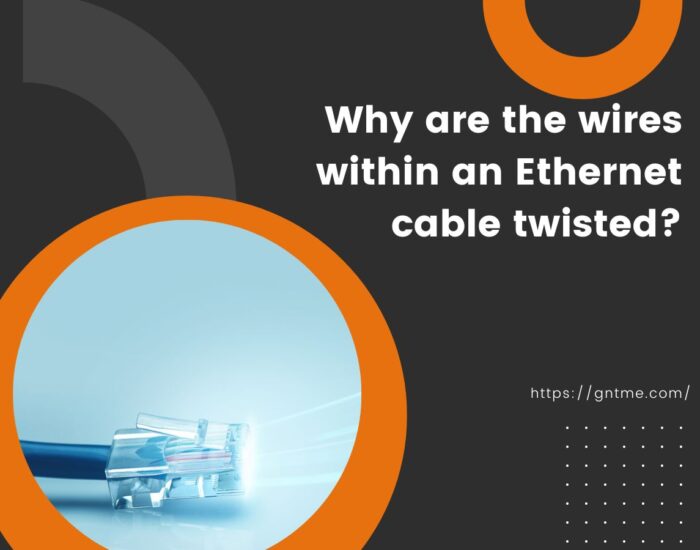Cat5 vs. Cat6 Ethernet Cables: What’s Best for You?
Network LAN or Ethernet cables connect devices such as modems, routers, computers, servers, and switches to the web. These cables are something that organizations take for granted. They randomly pick a cable and use it to connect the devices, expecting quality connection and smooth operations. The fact is that the network won’t exist without a proper connection of the networking devices. So, it becomes significant to choose the right Ethernet cable.
When we discuss Ethernet cables, the two varieties that commonly come into the picture are Cat5 and Cat6, plus their common sub-varieties, Cat5e and Cat6a. Both the cable categories are good in their ways, helping different organizations to set up a strong connection. The only problem is finding out which cable is the right option for a particular organization.
The decision is very difficult because it’s about networking on which the operations of the entire company depend. To make your choice, we will discuss the differences between Cat5 and Cat6 cables. We will also give a brief of their sub-varieties.
About Cat5 Ethernet cables
Introduced in 1995, the Cat5 is the fifth generation of unshielded, twisted-pair Ethernet cable technology, which is also known as Unshielded Twisted Pair or UTP. Since its introduction, it has been the most popular twisted-pair cable.
This Ethernet cable contains four pairs of twisted copper wire that end with an RJ-45 connector, which plugs into a standard Ethernet jack.
The Cat5 Ethernet cables ensure high-speed internet with the ability to transfer data at 100 Mbps and 100 MHz bandwidth. In shorter distances, the cables run up to 2.5 GBASE-T.
Talking about Cat5’s sub-variety, the Cat5e offers Gigabit Ethernet speeds up to 1000 Mbps, and a bandwidth of 350 MHz Introduced in 2001, the Cat5e is compatible with standard Cat5 cables. Here, “e” stands for enhanced.
Physically, both the standard Cat5 and sub-variety Cat5e Ethernet cables look identical. The only difference is the Cat5e cables contain four pairs of copper wires instead of two. But, they are different in speed. The Cat5e cables are 10 times faster than Cat5 cables. A significant difference is experienced between standard and sub-variety cables in IT companies or companies dealing with a large amount of information.
The Cat5e cables are more rigorously tested than Cat5 to eliminate crosstalk or signal interference and are twisted more tightly.
Why should you use Cat5 Ethernet cables?
- Offer high-transfer speeds at a low cost
- Ability to transfer up to four signals in one-time
- Support Gigabit Ethernet
- Preferred for applications like networking, telephone wiring, etc.
- Come in both stranded form for flexibility and solid conductor form
- Easy installation without using any special tools
Why shouldn’t you use Cat5 Ethernet cables?
- Limitations in data transfer, only up to 100 Mbps of transfer speed
- Susceptible to signal noise from wireless devices, further reducing data transfer speeds
- Not recommended for network installations
About Cat6 Ethernet cables
Like Cat5e, the Cat6 Ethernet cables have four twisted pairs of copper wire with 250 MHz of bandwidth that support data transfer speeds of up to 10 Gbps (10GBASE-T). The distance is approximately 180 feet. The best thing about Cat6 Ethernet cables is that they are compatible with Cat5/5e and Cat3 cables.
The Cat6 Ethernet cables are also used for 328 feet but the maximum data transfer speed drops to approximately 1 Gbps. As the global standard for Ethernet cables, the Cat6 Ethernet cables are perfect for applications with substantial data transfer needs, including Internet of Things (IoT) setups.
Regarding Cat6a Ethernet cables, they have thicker, heavier construction than Cat6 cables. Here, “a” means augmented. The individual pairs of the wire have metal shielding to reduce interference further. They support 10 Gbps internet up to 328 feet at a maximum bandwidth of 500 MHz, which is double the bandwidth of Cat6. Most importantly, the Cat6a cables are compatible with Cat6 and Cat6e cables because of their shared RJ-45 jack.
Read About The 7 Best Ethernet Cables of 2022
Cat6a cables are used for applications outside data and telephony, such as automation and physical security systems like access control and CCTV. Also, these cables are preferred in networks with heavy data use but don’t need expensive fiber optic cables.
Why should you use Cat6 Ethernet cables?
- Have stricter performance specifications
- Speed of data transfer is significantly high at greater distances
- More tightly twisted than Cat5 cables
- Cable conductors and cable sheath are thicker
- Interior and exterior signal/ EMI interference is reduced to a greater extent
Why shouldn’t you use Cat6 Ethernet cables?
- More expensive than Cat5 cables
- Tend to be more than what an organization needs today
- Not possible to use in limited space
Cat5 vs. Cat6 Ethernet Cables: What’s Best for You?
Additional thickness/stiffness makes the cable less flexible and harder to work with
Cat6a are around 40-50% thicker and heavier than Cat6
As already stated, both Cat5 and Cat6 Ethernet cables are perfect in their ways. So, you should determine the needs of your organization before deciding on the best option. For example, if you have money and want higher data transfer, you should choose Cat6 Ethernet cables. On the other hand, if 100 Mbps speed transfer is enough, you should opt for Cat5 Ethernet cables. They will fulfill your requirements at a low cost.
Try to determine the requirements based on different factors such as industry, operations, flexibility, and others. To know more about Ethernet cables, connect with us via WhatsApp at 971585811786.









